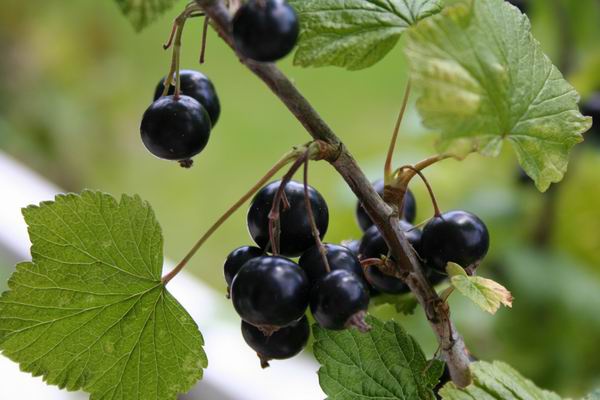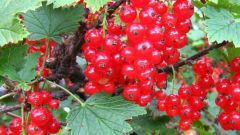You will need
- At the main fertilizer on 100m.kV.:
- - rotted manure 3-4 kg;
- - superphosphate of 3.5 – 4 kg;
- potassium соль1 – 1.2 kg;
- ammonium nitrate, 2 kg.
- On the feeding of 100m.kV.:
- ammonium nitrate 13 kg;
- - wood ash (as substitute potassium salt) of 250-300 g per Bush.
Instruction
1
The main fertilizer in the soil for currants in the fall
Dig the soil under the currant bushes. Homeland, keep the shovel edge of the Bush, less to damage the roots. Near the bushes, dig deep, farther away from the base of the Bush, the deeper you can dig up the soil.
Dig the soil under the currant bushes. Homeland, keep the shovel edge of the Bush, less to damage the roots. Near the bushes, dig deep, farther away from the base of the Bush, the deeper you can dig up the soil.
2
While digging, make the well rotted manure. It rotted, because fresh will burn the fibrous roots of currant. Use manure 3-4 kg per sq. m make Sure you add superphosphate (30-40 g/sq. m.) and potassium salt (10-12 g/sq. m.). Instead of the potassium salt can use wood ash (240 to 300 g/sq. m.)
3
The main fertilizer in the spring soil
Spend this fertilizer only if in the autumn you did not do basic fertilizer of the soil. Spend digging in early spring as soon as will allow the soil. Prepare organic and mineral fertilizers. This time of year is best to use the manure slurry or poultry manure. They must be diluted with water. The manure is diluted in the ratio 1:3 and well mixed. Bird droppings diluted at the rate of 1 kg per 2 buckets of water. Use a complete fertilizer, also spreading it with water at the rate of 1 kg in 5-6 buckets of water.
Spend this fertilizer only if in the autumn you did not do basic fertilizer of the soil. Spend digging in early spring as soon as will allow the soil. Prepare organic and mineral fertilizers. This time of year is best to use the manure slurry or poultry manure. They must be diluted with water. The manure is diluted in the ratio 1:3 and well mixed. Bird droppings diluted at the rate of 1 kg per 2 buckets of water. Use a complete fertilizer, also spreading it with water at the rate of 1 kg in 5-6 buckets of water.
4
Dig on both sides of each Bush, at a distance of half a meter, groove depth of 10 cm Make them into liquid fertilizer. Slurry will need 6 years in the Bush (bird droppings – 4 years), complete fertilizer – half a bucket on a Bush. Instead of finished fertilizers can take 20g of ammonium nitrate, 40 g of superphosphate and 15 g of potassium salt and dissolve them in half a bucket of water. Once the water is absorbed, the grooves pricopie and loosen the soil.
5
Fertilizing the soil in spring
Make a spring fertilizer, if you fall you are completely fertilized soil. Will vzryhlite the soil under the bushes. Make the grooves as described in the previous step. Make 50-60 g of ammonium nitrate or 40-45 g of urea (based on hive). Both can be diluted in 2.5 l of water. Feed black currants in the same amount of ammonium nitrate on the Bush during the formation of the ovaries.
Make a spring fertilizer, if you fall you are completely fertilized soil. Will vzryhlite the soil under the bushes. Make the grooves as described in the previous step. Make 50-60 g of ammonium nitrate or 40-45 g of urea (based on hive). Both can be diluted in 2.5 l of water. Feed black currants in the same amount of ammonium nitrate on the Bush during the formation of the ovaries.
6
Feeding the soil in the summer
Spend the last feeding after harvest. To feed again of ammonium nitrate or urea, but only in smaller doses – 30-40 g of ammonium nitrate and 20-30 g of urea per Bush. Liberally pour plants. On every Bush use 2-3 buckets of water.
Spend the last feeding after harvest. To feed again of ammonium nitrate or urea, but only in smaller doses – 30-40 g of ammonium nitrate and 20-30 g of urea per Bush. Liberally pour plants. On every Bush use 2-3 buckets of water.
Useful advice
On the rich and heavy loam soil basic fertilizer can be made every 3-4 years, increasing the dose, respectively, in 3-4 times. On poor loamy soils and sandy and loamy Sands, peat the main fertilizer should be conducted annually, as well as enhanced summer feeding – added liquid organic and mineral fertilizers.

